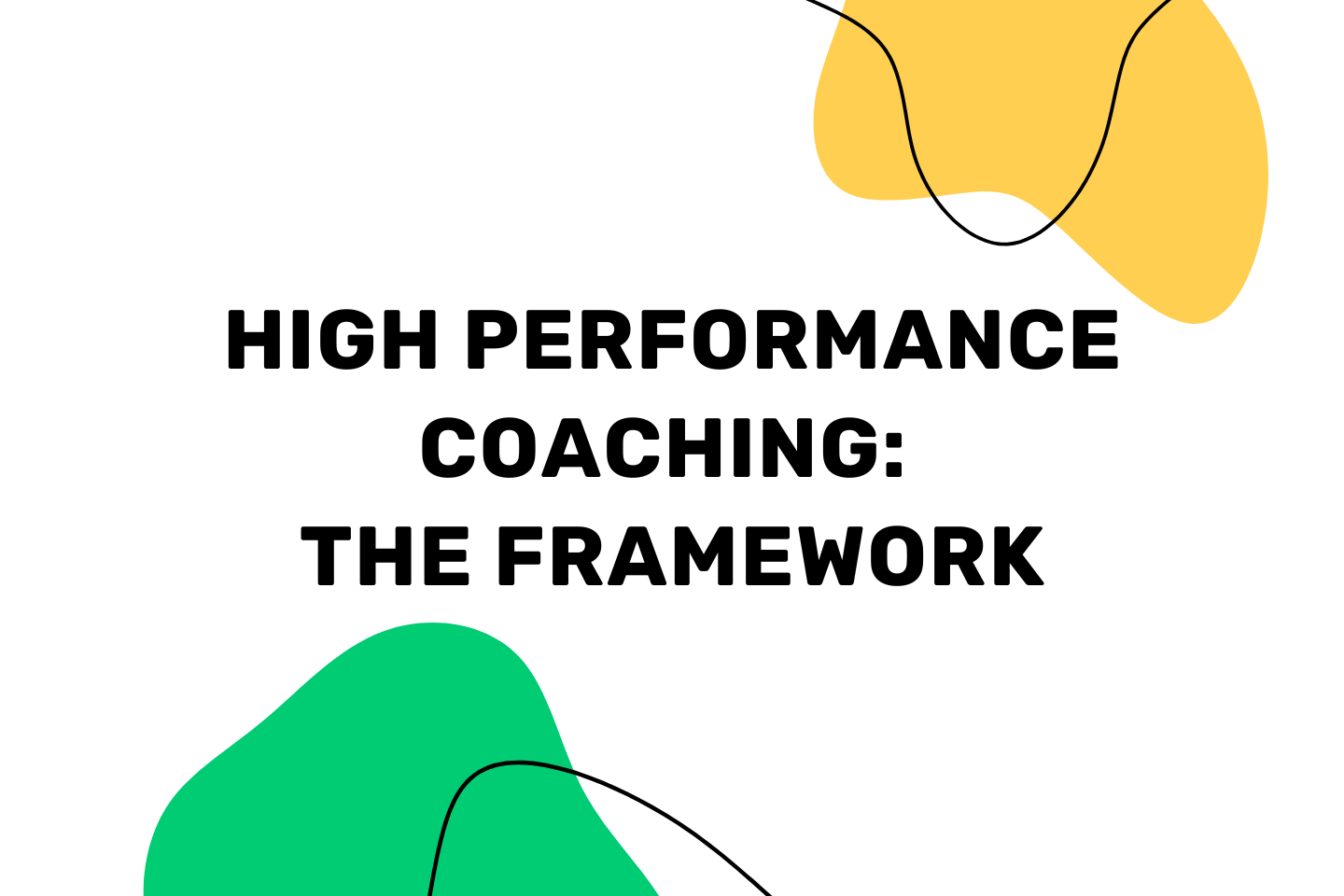What’s the difference between a coach that charges $50 or $100 per hour and a coach who charges thousands of dollars per hour and has a long wait list of clients?
I wanted to know the answer to this question, so I discussed this topic with veteran coach, Todd Herman. Todd has coached Olympic athletes, CEOs managing hundreds of millions of dollars, and other elite individuals.
Today, he offers a few coaching programs that individually generate well into the six figure range. On the rare occasion that he accepts a one-on-one client, the annual fee is more than the average American’s annual salary.
So what separates high performance coaches like Todd from the rest, and more importantly, how can you become a high performance coach?
Fortunately, that’s what we’ll discuss in this post so that you can level up your coaching skills and deliver an outstanding customer experience.
What is High Performance Coaching?
High performance coaching is a coaching method that focuses on producing transformational client results.
If you analyze high performance coaches like Todd, they obsess over client results and are with the client every step of the way. For example, Todd encourages clients to text him questions regularly, and he’s right there when they run into trouble.
Another factor worth mentioning is that Todd’s clients are also world class. Coaching is one of the unique industries where your results depend largely on the clients you work with.
For this reason, he’s selective with who he works with, and almost all of his clients come from referrals from past clients.
So if you want to build a proven track record and generate great referrals, be selective with the clients you accept. Even if you’re just starting out, you can still get great clients with no prior coaching experience if you yourself have successfully achieved the goal they are working towards.
Now that you have a basic overview of high performance coaching, let’s discuss the details of a world class coaching process.
The Framework of a High Performance Coaching Program
To help you become a leading high performance coach, here’s a framework that you can use to develop a coaching program that leads to transformational client results.
Build a Specific Process For a Specific Result
We already discussed that consistently producing transformational results is the core differentiator between average and high performance coaches.
So how can you ensure you consistently produce transformational results?
Build a specific process and tweak it until it consistently produces the desired results.
It sounds simple, but it’s a key aspect that most coaches don’t realize.
So instead of getting on a coaching call and asking the clients what they’re struggling with, high performance coaches have a very specific roadmap to a very specific end goal. They’ve spent hundreds of hours perfecting it and dozens of clients have used it to achieve the desired end result.
For example, let’s say you’re a business coach, and you have a specific program designed to help course creators grow from $100,000 per year to $500,000. If you’ve used this program to help 100 course creators achieve those results, the target audience (course creators doing $100,000 per year) is going to be much likely to pay you significantly more than a generic business coach with no specific blueprint for success.
So think about a specific end result that you’re really good at helping people achieve, and then build a program around that end goal.
Once you start developing a program, you’ll be able to test various aspects of the program and become the best in the industry at achieving that one specific result.
Okay, so how do I build a program?
Start by creating a multi-week roadmap with a topic for each week and video lessons on that topic.
However, content alone isn’t going to help your clients achieve their desired results. So, in addition to creating video lessons, add action tasks and habits that correspond with each lesson.
As you can imagine, storing lesson modules, tracking habits, creating worksheets, and assigning tasks can quickly make your coaching program messy.
So if you want an all-in-one platform that enables you to store all of your program materials and track client progress from a single dashboard, consider using upcoach. Here are just a few of the features upcoach offers:
- Habit tracker
- Task list
- Smart Documents (native worksheet creator)
- Accountability group
- Lesson modules (store lesson content)
- Client CRM (track client progress)
- Meeting scheduler
- Chat with clients

Onboarding Clients Effectively
Your onboarding process is incredibly important because it teaches clients how to make the most of the experience, from navigating the platform to learning how to make the most of you. This way, clients aren’t waiting until the next coaching session to ask a question, which helps them execute faster.
Given the importance of onboarding, many coaches cover these key items during the first coaching call.
However, this wastes a whole session for the client, and it’s also annoying for coaches to cover housekeeping items.
So instead, Todd creates a library of onboarding videos that clients can consume in their own time.
To give you a good model to follow, here are a few basic topics Todd covers in his onboarding materials:
- How to use the platform and where to find important materials
- What he expects from clients and what clients can expect from him
- How clients should leverage him
- Tips based on the most successful clients’ habits
If the client has any follow-up questions, they can ask them on the call, but having an onboarding lesson should drastically reduce the time spent answering housekeeping questions.
Conducting Coaching Sessions
Now that you have a solid coaching program in place and clients can consume the material on their own time, you can spend time working through challenges and answering follow-up questions.
However, it’s still important to set the intention for each call. Otherwise, you’ll still probably wander aimlessly during the session.
That’s why Todd asks clients to fill out a simple three question form before each session:
- What were some of your wins this week?
- What is the goal of this coaching call (issues, challenges, problems, opportunities)?
- What are three options to solve this issue?
If you use upcoach, they can fill out this form directly inside the platform so that you can easily find it before the coaching session.
SC Questionnaire
Once you’re on the coaching call, there are plenty of different coaching styles and methodologies. If you want to know how Todd approaches the coaching process, we have an in-depth resource dedicated to that topic.
From a structure standpoint, here’s a sample format you can adopt for your coaching sessions:
- 5 minutes reviewing the wins for the week
- 35 minutes Dive into specific challenges, get to the root of the problem, and brainstorm solutions
- 5 minutes reinforcing progress and assigning the coming week’s action steps
Holding Clients Accountable
Many clients (even high achievers!) already know what they need to do to achieve their goal, but they just aren’t executing it.
So perhaps your most important job as a coach is to hold clients accountable. While you can ask clients to text, call, or email you when they complete an action item, this scattered communication style can quickly become messy.
Instead, Todd uses upcoach because it enables clients to check off habits and tasks, and even complete worksheets, directly inside the platform. Then, he can monitor client progress in his own time either by scrolling through the dashboard or opening up the client’s profile in the CRM. Unlike most CRMs, it shows a detailed overview of the completion percentage of every habit, task, and worksheet assigned:

So as soon as you notice a client becomes disengaged, you can reach out and offer support.
If you offer group coaching, you can also create accountability groups. This way, clients can hold each other accountable, which makes the program more scalable and provides an additional level of value – networking with like-minded people.
To structure an accountability group, you can assign one of the clients (or an assistant coach) to organize a meeting time. From there, they can use the following structure to run the accountability group:
- Give each person 5 minutes to review high performance habits and task progress
- The group can help brainstorm solutions for any issues that arose
- Provide action items to improve during the following week
If you’re using upcoach, you can create accountability groups directly inside the platform. From there, members can use the private discussion forum to communicate during the week, view each others’ habits and tasks, and access a meeting link.

Celebrating Progress
The final job of a coach is to encourage clients. Many entrepreneurs and other high achievers fail to see the progress they’ve made and only see the mountain ahead. So it’s important to help them celebrate and recognize when they’ve made it to the next level as that will give them more motivation to tackle the next challenge.
In addition, proving how much clients have progressed in various areas of their lives since working with you incentivizes them to renew their contract with you. So if you want to make your coaching program sustainable, this step is critical.
Selecting a Platform Designed to Support High Performance Coaching
If you’re working with top performers, they’re willing to pay top dollar for coaching services and expect you to deliver a five-star customer experience.
If your coaching model is messy and involves sending worksheets over email, setting up a habit tracking app on their phone, texting tasks, and logging into a course platform to access material, they’ll probably be less than impressed.
This is why we created upcoach. It’s a truly all-in-one coaching platform that enables you to assign tasks, track habits, create worksheets, store lesson content, and schedule meetings from a single, well-designed dashboard.
To see for yourself how upcoach is empowering high performance coaches by making it easy to deliver a better coaching experience, schedule a demo or try it out risk free!

